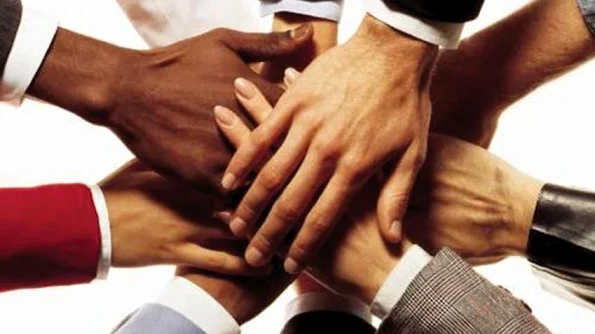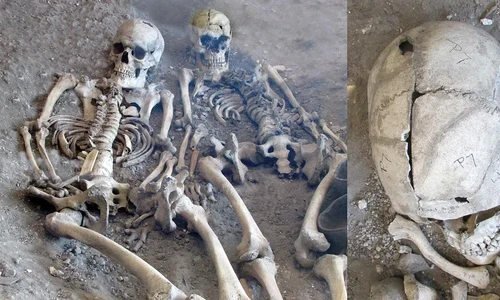
Races aren’t real. At least not biologically.
Race is a strong word that seems to pop up all to often in everyday discourses, especially in moments when we are trying either to make sense of difference and relate it to certain attributes. In problematic or conflict situations themes such as race, nation, ethnicity seem to come into being all the more visibly as legitimizing factors for this and that action.
We’re inclined to categorizations, but the way we organize reality has a lot to do with the interplay of socio-cultural factors and discourses of power rather than with some fixed identities. So in other words races do exist but the systems of classification differ from one culture to another and we cannot speak of die-hard rules to differentiate depending upon ancestry and physical characteristics because genetics simply does in absolutely no way confirm biological race. Ancestry is actually a more appropriate term since it is associated with migratory patterns resulting in kinships. Biological race was and is still used in political narratives in order to present some claims to power as natural and given, to justify unequal treatment of groups. It is therefore more like a mythical construct.
Yes, people do look different. People do act different. But we would be much better off if we stopped mistaking cultural conventions, group bindings or institutionalized stereotypes for some preexisting classifying principles. Race is anyway a modern concept. Ancient societies for instance didn’t divide people according to ‘race’, but to religion, status, class, language. The idea came about in modern times and it evolved alongside that of freedom. The early American economy flourished on the unequal treatment of people and the racial discourse served as a legitimizing factor for this differentiation. Race in right-wing movements contains an almost mystical connotation also utilized to justify superiority. And beyond that, it has been a powerful social construct that offers people distinct access to resource and possibilities for self-assertion. So one might say that racism is somehow more real than races. Social institutions sometimes tend to create disproportions and augment preconceptions as means to concentrate wealth and power to the ruling group.
Very briefly, ideas such as race are meant to naturalize socio-culturally constructed realities. So now let’s see why races don’t biologically exist. Well, basically because human subspecies don’t. Unlike most species, homo sapiens hasn’t been around for too long and in isolated locations so as to develop separate subspecies. Our prehistory knew several species of hominids such as the recently discovered homo naledi, but our species is the only surviving one. So in spite of the surface appearances, we are one of the most genetically similar species on earth.
Variation, small at any rate, manifests itself inside what we may deem as ‘races’. About 85% of the human variation exists in any group, 95% on every continent. So two Chinese can be as genetically different as a German and a Chinese. But overall those distinction don’t matter on the species level. The fact that appearances are deceitful is a cliché, but a very relevant one in this case:skin colour is literally skin-deep. The genes that determine it have nothing whatsoever to do with the genes determining our eye colour, blood type, intelligence, athletic abilities and so on. Southern Indians are as dark as many Africans, because skin colour is correlated with sunlight and latitude. How about nose shape? East and Southeast Asia vary in this respect and German noses resemble Arabian ones more than, say, Norwegian. Head size? Populations in Scandinavia and India have on average medium-sized heads, whereas English and western Africans larger ones. The list could continue indefinitely.
That is on account of the inexistence of a singular gene which can tell us that we belong to a certain race. We could map any number of traits and none will ever match our concept of race. Sometimes immigration might give us the impression of distinct groups but globally speaking populations are very varied and blend with one another, we are all hybrids. Yet ONE species.
As mentioned before, time and isolation are basic ingredients for the development of species. Humans are young and have been quite mobile in their history. We spent most of our evolution together in Africa and only emerged about 200.000 years ago and about 70.000 years ago we were reduced to near extinction probably following a catastrophe after the eruption of the Toba supervolcano. This contributed to the limited quantity of genetic variety and when people started spreading in Eurasia they had even less assortment to begin with which moreover never had the time to widen.
If we were to compare ourselves to a close relative, the chimpanzee, there is more genetic diversity in a group of chimps than in the whole human species. Domesticated animals also enjoy a lot of genetic diversity because of interbreeding which in time led to separate groups. Humans have, on the contrary, been mixing freely, which is why we are mongrels. Furthermore, humans have overcome geographical limitations, modifying environment when needed. Even the most isolated Pacific island has had some contact with other populations. So we might say that globalization is not that new. Variants are produced through mutations (copying errors in future generations), which take a long time to accumulate. Moreover, migration, be that to a lesser extent, prevents genetic distinction.
Sure, differences between people seem obvious, but they do not translate into deeper ones. Traits are inherited independently, so we cannot infer the presence of one trait from another one. Genetic differences speak more likely of ancestry, not race. Not everyone living in the same region shares a common ancestry, which is why diseases or resistance are not limited to a specific group in a specific area. It has long been thought for instance that Sickle cell was something African which to the contrary, is a gene conferring resistance to malaria also found in the Mediterranean or Arabia, but not southern Africa. However, race as a social construct may affect people on a biological level. Native Americans have one of the highest rates of diabetes, yet that has more to do with access to medical care or safe living conditions than to genetics which can’t really determine who is Native American or not.
Thinking of race as biology prevents consideration of social factors contributing to grouping or segregation. There are ways apart from genetic research that might give us some insight into this problem:we can map our own family tree and see how many ancestors can we actually be sure of, map movements of our families investigating who married whom and from where they came, we can also research a specific region and figure out how many groups have inhabited it over time, trace routes of historical travellers and their encounters with various peoples.
Whereas on can notice a great deal of cultural diversity, genetically speaking there isn’t enough variability to produce biological races. If we did have biological races, they’d all be in Africa anyway. Variability strikes us if we compare the tall Masai and the very short Mbuti pygmies, however, we tend to classify them all as black, which enforces the notion of race as a cultural category posing as a biological one. This myth of the race built up racism and although on a personal level we may not think in such terms, racial inequality still persists. The main cause is not prejudice, but rather institutional racism which can flourish despite the decrease in prejudices, because we are dealing with social structures that allow inequalities, not personal opinions. We will detail this topic in a subsequent note.
You can read more HEREabout why your race isn’t genetic.















